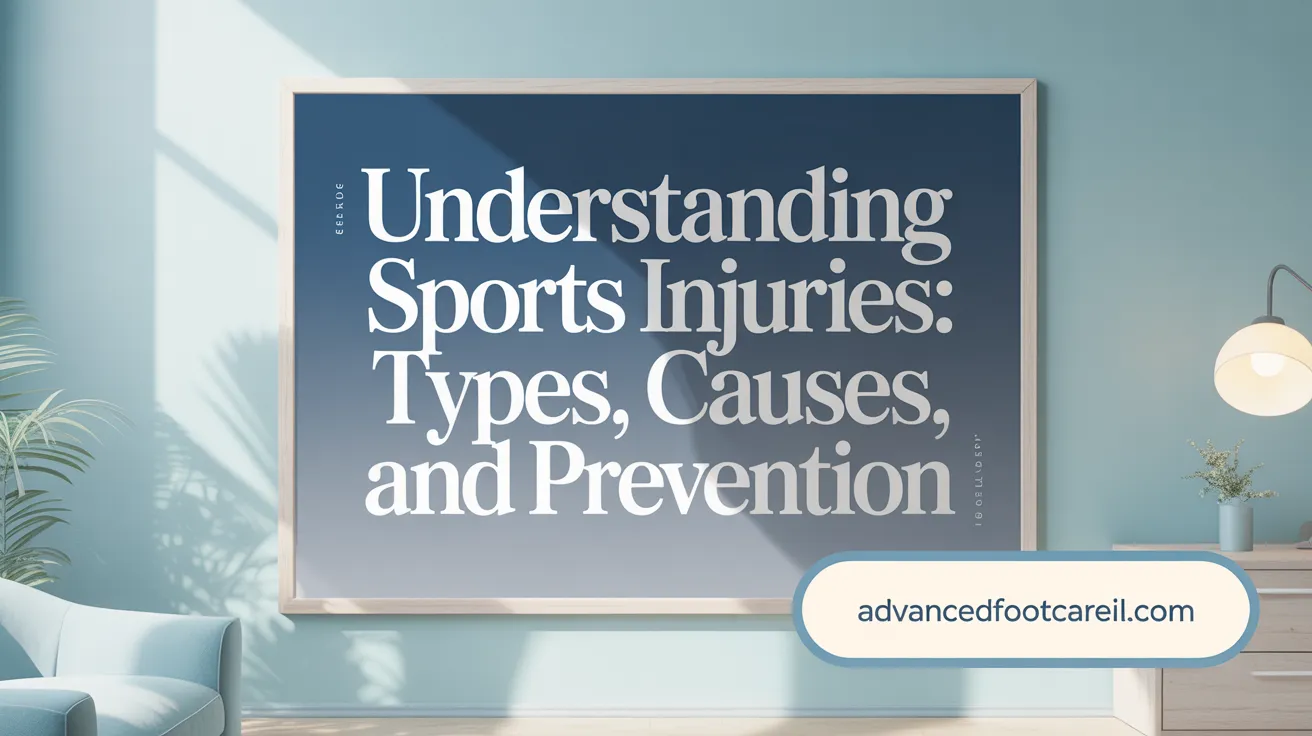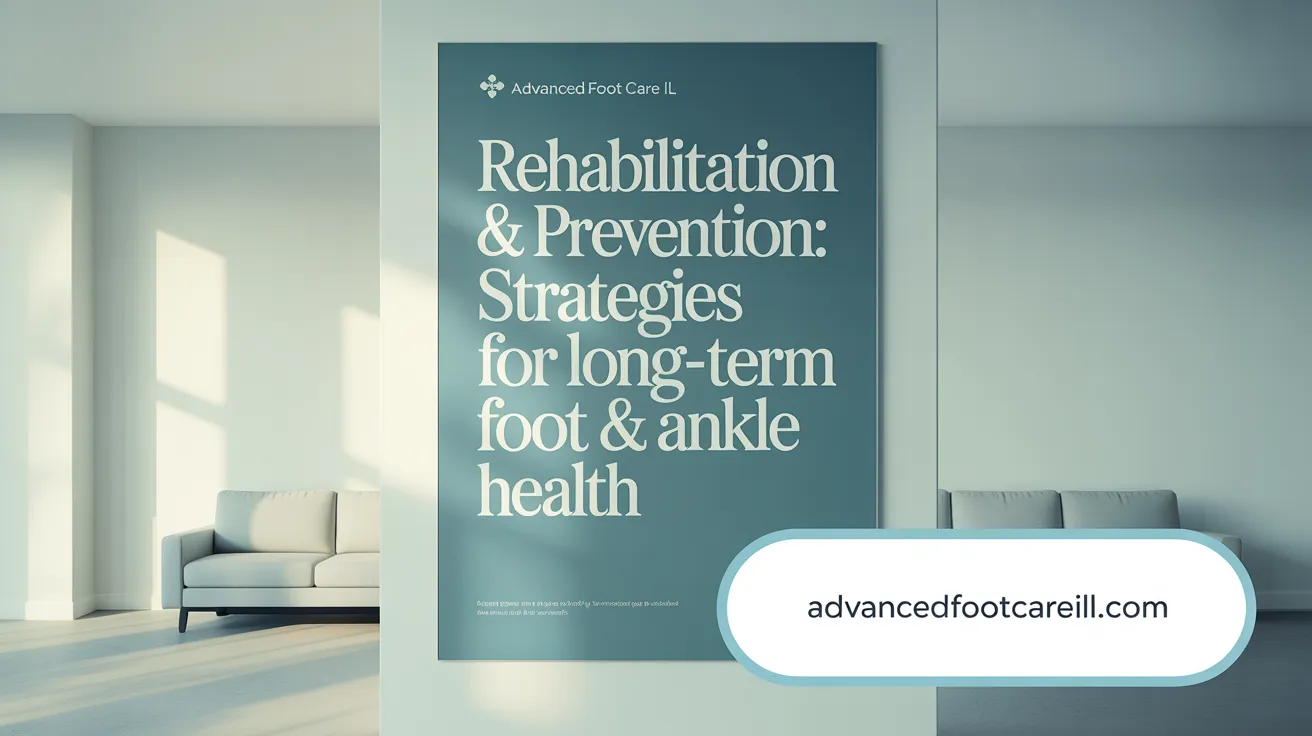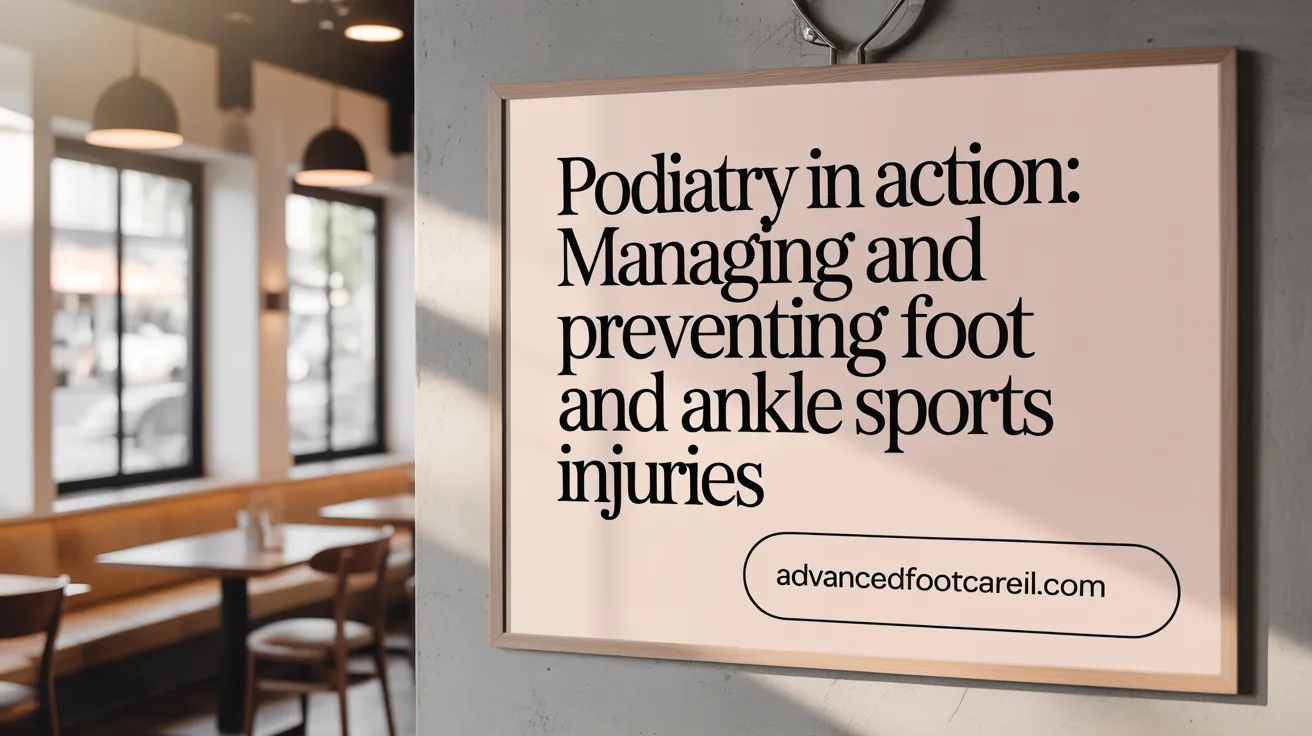Introduction to Foot and Ankle Sports Injuries
Prevalence of Sports Injuries in Foot and Ankle
Foot and ankle injuries represent approximately 25% of all athletic injuries, underscoring their frequent occurrence among athletes and active individuals. This high prevalence is due to the significant stress these areas endure during sports activities, including sudden twisting, rolling, and high-impact movements.
Common Types of Sports-Related Foot and Ankle Injuries
Common injuries include ankle sprains, Achilles tendonitis, plantar fasciitis, stress fractures, turf toe, and heel spurs. Ankle sprains involve ligament stretching or tearing often from awkward landings or uneven surfaces. Achilles tendonitis results from overuse and inflammation of the tendon connecting the calf muscles to the heel. Plantar fasciitis causes heel pain due to inflammation of the plantar fascia tissue. Stress fractures are tiny cracks in bones caused by repetitive stress. Turf toe is a sprain of the big toe joint frequently seen on artificial turf.
Significance of Proper Diagnosis and Treatment
Accurate diagnosis using physical examinations and imaging techniques like X-rays and MRIs is critical to identify the injury's extent. Proper treatment—which may include rest, ice, compression, elevation (RICE), physical therapy, orthotics, and sometimes surgery—supports healing and prevents long-term complications. Early consultation with a podiatrist ensures personalized care and helps athletes safely return to their sport.
Common Types and Causes of Sports Injuries in the Foot and Ankle

What are the common types of sports injuries affecting the foot and ankle?
Common sports injuries to the foot and ankle include ankle sprains, plantar fasciitis, stress fractures, Achilles tendinitis, turf toe, heel spurs, and neuromas. Ankle sprains occur when ligaments are stretched or torn, typically from sudden twisting or rolling, often involving the lateral ligaments. Plantar fasciitis is an inflammation of the plantar fascia causing stabbing heel pain, usually worse with the first steps in the morning or after rest.
Stress fractures are tiny cracks in bones due to repetitive impact or overuse, commonly affecting metatarsals, navicular, or heel bones. Achilles tendinitis results from inflammation and degeneration of the Achilles tendon, especially from overuse, leading to posterior heel pain and stiffness. Turf toe is a sprain of the big toe joint caused by hyperextension, frequent on artificial turf surfaces, and impacts push-off strength.
Heel spurs are calcium deposits forming bony protrusions on the heel bone often linked with plantar fasciitis. Neuromas involve thickening or pinching of nerve tissue, causing pain or numbness, usually between toes.
What causes these injuries?
Injuries arise from multiple factors including overuse from repetitive actions, improper footwear lacking sport-specific support, poor technique, and inadequate warm-up routines. Playing surfaces also influence risk, with harder or artificial fields increasing stress on foot structures.
Biomechanical factors such as foot shape abnormalities, poor gait mechanics, and arch problems can predispose athletes to these injuries by creating abnormal pressures and strains during movement. Proper assessment and correction of these biomechanical issues are crucial in prevention and treatment plans.
Preventative strategies focus on wearing correct footwear, gradual training progression, stretching and strengthening exercises, and selecting appropriate playing surfaces to minimize injury risk.
Diagnosis and Early Management Strategies

How are foot and ankle sports injuries diagnosed?
Foot and ankle sports injuries are diagnosed through a combination of symptom assessment, physical examination, and imaging techniques. Common symptoms include pain, swelling, bruising, tenderness, and difficulty bearing weight. A thorough physical examination evaluates the extent of ligament, bone, or soft tissue damage and identifies areas of tenderness or instability (Physical examination for ankle sprain, Physical Examinations for Foot Injuries, Diagnosis of foot and ankle injuries).
Imaging tests such as X-rays, MRI, and CT scans play a crucial role in confirming the diagnosis. X-rays are typically used to rule out fractures or bone deformities, while MRI scans provide detailed images of soft tissues including ligaments, tendons, and cartilage. CT scans may be utilized for complex injuries or to assess subtle bone injuries more clearly (Imaging tests for sports injuries, Imaging for Ankle Injuries, Imaging for foot and ankle sports injuries).
What are the initial treatment methods?
Initial management of sports injuries in the foot and ankle often follows the RICE protocol: Rest to prevent further injury, Ice to reduce pain and swelling, Compression to minimize swelling, and Elevation to help fluid drainage. This approach is particularly effective within the first 24 to 72 hours after injury (R.I.C.E. protocol for injuries, RICE method for ankle sprains, RICE Treatment for Injuries).
Pain relief is commonly managed with over-the-counter nonsteroidal anti-inflammatory drugs (NSAIDs) like ibuprofen to control inflammation and discomfort (Pain management for ankle sprain, Use of NSAIDs for pain and inflammation). Depending on the severity, bracing, splinting, or temporary immobilization with walking boots may be necessary to protect the injured structures and facilitate healing (Ankle braces and supports, Bracing and Casting, Orthotics and bracing).
Early consultation with a podiatrist is essential if symptoms persist beyond a few days, worsen, or if there is significant instability or inability to bear weight. Prompt professional evaluation ensures accurate diagnosis and guides rehabilitation, reducing the risk of chronic pain or recurrent injuries (When to see a podiatrist, Early diagnosis of sports injuries, Sports injuries requiring foot and ankle surgery).
Rehabilitation and Preventative Approaches to Injuries

How does rehabilitation contribute to recovery?
Rehabilitation is essential for athletes recovering from foot and ankle sports injuries. Through physical therapy for foot injuries, patients can regain full range of motion, strengthen weakened muscles, improve balance, and enhance neuromuscular control. These elements are vital not only for healing but also for reducing the risk of future injuries. Structured rehab programs often include stretching, strengthening, and proprioception exercises tailored to the injury's severity and type (Rehabilitation of ankle and foot injuries in athletes).
What rehabilitation exercises aid mobility, strength, and balance?
Effective rehabilitation incorporates exercises such as joint mobilization, calf raises, toe curls, and balance training like standing on one leg or using wobble boards. These activities restore flexibility, rebuild muscle strength around the affected areas, and retrain the body's coordination to prevent instability. A graduated approach ensures progressive recovery without overloading the injury (Physical Therapy Guidelines for Lateral Ankle Sprain).
How do orthotics and bracing support injury recovery and prevention?
Custom orthotic inserts help correct biomechanical issues, provide arch support, redistribute pressure, and stabilize the foot during movement. Bracing or taping offers additional support to weak or healing ligaments, minimizing excessive motion that could cause reinjury. These interventions are often used both in rehabilitation and ongoing injury prevention strategies (Orthotics and bracing.
Why is proper footwear crucial?
Wearing sport-specific shoes that fit well and provide appropriate support is fundamental in safeguarding the feet and ankles. Proper footwear reduces undue stress, absorbs shock, and accommodates the athlete’s foot type and activity demands. Regularly replacing worn-out shoes maintains this protection over time (Proper footwear for sports).
What role do warm-up routines and muscle conditioning play?
Warming up increases blood flow and prepares tendons and ligaments for physical stress, reducing injury risk. Muscle conditioning through strength and flexibility exercises builds resilience against overuse injuries. Combining both ensures the feet and ankles adapt safely to training loads (Strengthening and stretching exercises.
How can athletes prevent recurring injuries?
Preventing recurring injuries involves adhering to rehabilitation protocols, using orthotics or braces if recommended, maintaining proper footwear, and avoiding sudden increases in training intensity. Consistent balance and strength exercises help maintain joint stability (Preventing sports foot injuries.
Importance of gradual training progression
Gradually increasing the duration, intensity, and complexity of athletic activities allows the musculoskeletal system to adapt without overload. Sudden training spikes are a common cause of stress fractures and tendonitis. A controlled progression reduces this risk (Preventing Foot and Ankle Injuries).
By integrating these rehabilitation and preventative strategies, athletes can effectively recover from sports-related foot and ankle injuries and minimize their recurrence, promoting long-term foot health and athletic performance.
Advanced Treatments and When Surgery is Necessary

When is surgery recommended for foot and ankle sports injuries?
Surgery is recommended for severe foot and ankle sports injuries that do not respond to conservative treatments. This includes cases such as complete ligament tears, displaced or unstable fractures, chronic joint instability, and persistent pain or dysfunction after extended rehabilitation. Surgical intervention aims to restore structural integrity and function, preventing long-term complications. See more on Sports injuries requiring foot and ankle surgery.
Types of surgical procedures
Common procedures include:
- Ligament repair or reconstruction: Used for torn ligaments that cause instability. Learn about Lateral ankle sprains in football.
- Tendon repair or reconstruction: Applied when tendons like the Achilles are ruptured. Details at Achilles tendon ruptures.
- Open reduction and internal fixation (ORIF): For realigning and stabilizing fractures with screws, plates, or rods. See surgical techniques in sports injuries treated by podiatrists.
- Bone spur removal: To relieve pain from heel spurs or impingements. More about Heel spurs and related conditions.
- Arthroscopy: Minimally invasive surgery to treat cartilage damage or remove loose bodies. Related info in Minimally invasive foot injury treatments.
Minimally invasive approaches
Advances in arthroscopic and percutaneous surgical techniques for foot injuries allow surgeons to address many injuries with smaller incisions, reducing recovery time and surgical risks. These approaches are commonly utilized for ligament repairs, loose body removal, and cartilage treatments. See Minimally invasive procedures for foot injuries.
Post-surgical rehabilitation
Recovery includes immobilization periods followed by guided physical therapy focusing on:
- Restoring joint range of motion
- Strengthening muscles and tendons
- Improving neuromuscular control and balance
- Gradually returning to sports-specific activities Coordinated rehabilitation maximizes functional recovery and reduces the risk of reinjury. For guidance, see Rehabilitation of ankle and foot injuries in athletes and Physical therapy for ankle injuries.
Collaborative care
Optimal outcomes are achieved through multidisciplinary teamwork among podiatrists, orthopedic foot and ankle surgeons, physical therapists, and athletic trainers. Expert diagnosis and customized treatment plans ensure appropriate intervention levels and comprehensive rehabilitation support. For details on team-based care, visit Orthopedic and sports medicine care and The vital role of podiatry in sports medicine.
Expert assessment using imaging and biomechanical evaluation guides treatment decisions, balancing conservative management with timely surgical intervention when necessary to facilitate safe and effective return to activity. Additional information on Diagnostic imaging for foot injuries and Imaging tests for injuries may also be helpful.
The Vital Role of Podiatry in Managing Sports Injuries

How do podiatrists assist in managing sports injuries of the foot and ankle?
Podiatrists play a crucial role in assessing and managing sports injury of the foot and ankle. Their expertise begins with a comprehensive clinical examination to evaluate foot and ankle mechanics, which helps to identify biomechanical issues contributing to injury (Role of Podiatry in Sports Medicine).
Podiatric assessment and diagnosis
Following the initial assessment, podiatrists often utilize diagnostic imaging such as X-rays, MRI, or ultrasound to accurately diagnose conditions like ligament tears, stress fractures, or tendon inflammation (Diagnosis of sports injuries, Diagnostic imaging for foot injuries. This precision ensures that treatment plans are appropriately tailored.
Conservative treatments by podiatrists
For many sports injuries, podiatrists prioritize conservative management strategies. These include the R.I.C.E. protocol for ankle sprains (rest, ice, compression, elevation), prescription of anti-inflammatory medications, and physical therapy for foot injuries aimed at restoring strength, flexibility, and balance (Conservative treatment for sports injuries.
Custom orthotics and biomechanical correction
A significant aspect of podiatric treatment involves the use of custom orthotic design for sports injuries. These support abnormal foot structures and correct faulty biomechanics, reducing strain on injured tissues and preventing recurrence (Orthotics and bracing.
Patient education and injury prevention
Patient education is equally emphasized, focusing on proper footwear for sports, suitable training techniques, stretching routines, and activity modifications that promote long-term foot and ankle health (Preventing foot and ankle injuries.
Multidisciplinary team approach
Podiatrists collaborate closely with orthopedic surgeons, physical therapists, athletic trainers, and sports physicians to ensure comprehensive care, optimize recovery, and facilitate a safe return to sports (multidisciplinary care in sports podiatry).
Importance of early intervention for long-term health
Early consult with a podiatrist is vital to prevent chronic issues such as persistent pain, joint instability, or biomechanical complications that can limit athletic performance and quality of life (Consequences of untreated foot injuries.
By integrating diagnostic expertise, conservative therapies, orthotic solutions, and preventive education within a multidisciplinary framework, podiatrists provide essential care that enhances sports injury outcomes and promotes athlete wellness.
Conclusion: Ensuring Optimal Foot and Ankle Health in Sports
Importance of Early Diagnosis and Treatment
Early identification of foot and ankle sports injuries is critical to prevent long-term complications. Persistent pain, swelling, or instability should prompt timely medical evaluation, including clinical assessment and imaging when necessary. Prompt intervention can substantially enhance healing outcomes and reduce recovery time.
Emphasis on Rehabilitation and Preventive Care
Comprehensive rehabilitation programs that focus on restoring strength, flexibility, balance, and range of motion are essential to minimize recurrence risks. Preventative measures such as proper warm-up routines, sport-specific footwear, orthotics, and strengthening exercises are equally valuable to maintain foot and ankle integrity.
Value of Professional Podiatric Involvement
Podiatrists play a vital role in diagnosing, treating, and preventing sports-related foot and ankle injuries. Their expertise in biomechanical assessments, conservative and surgical treatments, and customized rehabilitation plans ensures optimal recovery and performance enhancement for athletes.
Encouragement for Athletes to Listen to Their Bodies and Seek Care
Athletes are encouraged to be attentive to their bodies, recognizing early warning signs of injury and avoiding overuse. Seeking professional care without delay fosters optimal outcomes, supports athletic longevity, and helps maintain peak physical condition.
